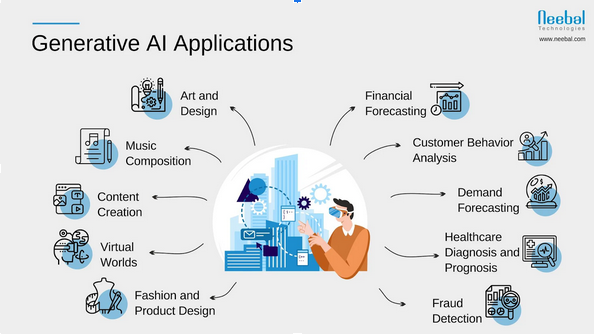Featured
That's why so numerous are applying dynamic and intelligent conversational AI models that consumers can engage with via message or speech. In addition to client solution, AI chatbots can supplement advertising and marketing initiatives and assistance internal interactions.
Many AI firms that educate big designs to generate message, pictures, video clip, and audio have actually not been clear about the material of their training datasets. Numerous leakages and experiments have exposed that those datasets include copyrighted material such as publications, newspaper posts, and movies. A number of claims are underway to figure out whether usage of copyrighted material for training AI systems makes up reasonable use, or whether the AI business require to pay the copyright owners for usage of their material. And there are obviously many classifications of negative things it can in theory be made use of for. Generative AI can be made use of for tailored scams and phishing strikes: For instance, using "voice cloning," fraudsters can duplicate the voice of a particular individual and call the person's household with a plea for aid (and money).

(At The Same Time, as IEEE Spectrum reported today, the U.S. Federal Communications Compensation has actually responded by banning AI-generated robocalls.) Picture- and video-generating devices can be made use of to generate nonconsensual porn, although the devices made by mainstream business prohibit such use. And chatbots can in theory walk a would-be terrorist with the actions of making a bomb, nerve gas, and a host of other horrors.
What's even more, "uncensored" versions of open-source LLMs are out there. Despite such prospective troubles, lots of people think that generative AI can likewise make people a lot more productive and could be utilized as a device to allow entirely new forms of creativity. We'll likely see both disasters and imaginative flowerings and lots else that we don't expect.
Find out more concerning the math of diffusion versions in this blog post.: VAEs include two neural networks normally described as the encoder and decoder. When offered an input, an encoder converts it into a smaller sized, a lot more dense representation of the information. This compressed representation preserves the information that's required for a decoder to reconstruct the initial input information, while throwing out any type of unimportant details.
Ai-powered Crm
This enables the customer to easily sample brand-new latent representations that can be mapped through the decoder to create novel information. While VAEs can generate outputs such as photos quicker, the images created by them are not as described as those of diffusion models.: Found in 2014, GANs were taken into consideration to be one of the most generally made use of approach of the 3 prior to the recent success of diffusion designs.
The 2 versions are educated together and obtain smarter as the generator creates much better content and the discriminator obtains far better at identifying the produced content. This procedure repeats, pressing both to continually enhance after every version till the produced content is equivalent from the existing web content (AI ecosystems). While GANs can supply premium samples and generate outputs rapidly, the sample variety is weak, therefore making GANs better matched for domain-specific information generation
: Similar to reoccurring neural networks, transformers are made to process sequential input data non-sequentially. Two systems make transformers specifically proficient for text-based generative AI applications: self-attention and positional encodings.
Generative AI starts with a foundation modela deep discovering version that serves as the basis for several various sorts of generative AI applications - How is AI used in autonomous driving?. One of the most common foundation models today are huge language designs (LLMs), produced for text generation applications, but there are likewise foundation models for picture generation, video generation, and sound and music generationas well as multimodal structure versions that can support numerous kinds material generation
Deep Learning Guide
Discover more regarding the history of generative AI in education and learning and terms related to AI. Find out more concerning just how generative AI features. Generative AI devices can: React to triggers and questions Produce photos or video Sum up and manufacture details Modify and edit content Generate innovative jobs like musical make-ups, stories, jokes, and rhymes Compose and remedy code Adjust information Create and play games Capacities can differ significantly by tool, and paid versions of generative AI devices typically have specialized features.

Generative AI devices are constantly learning and advancing but, as of the day of this publication, some limitations include: With some generative AI tools, constantly incorporating real research into text stays a weak functionality. Some AI devices, for example, can create message with a recommendation listing or superscripts with links to sources, but the referrals commonly do not correspond to the text produced or are fake citations made from a mix of actual publication info from several sources.
ChatGPT 3 - What are the top AI languages?.5 (the cost-free variation of ChatGPT) is trained making use of information offered up until January 2022. Generative AI can still compose possibly incorrect, oversimplified, unsophisticated, or biased feedbacks to concerns or prompts.
This checklist is not detailed but features a few of one of the most widely used generative AI devices. Tools with free variations are suggested with asterisks. To ask for that we include a tool to these listings, call us at . Elicit (sums up and manufactures resources for literature testimonials) Talk about Genie (qualitative study AI assistant).
Latest Posts
Ai In Healthcare
Is Ai The Future?
Ai-generated Insights